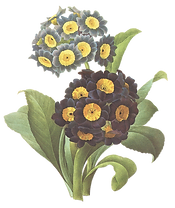Reflections on Time
- Cynthia Thomas
- Apr 10, 2019
- 2 min read

Walking the arc of the water’s edge, beneath the boughs of glorious soft pink blossoms - mirrored in the water and framed in the clear blue sky - I am struck by time.
A little more than 100 years ago, in 1912 to be exact, the people of Japan sent 3,020 cherry trees to the United States as a gift of friendship. First Lady Taft and the Viscountess Chinda, wife of the Japanese Ambassador, planted the first two cherry trees on the northern bank of Washington D.C.’s Tidal Basin.
These two can be seen near the John Paul Jones statue at the south end of 17th Street and are among the 100 originals that still stand. The National Park Service has done a successful replenishment program from the parent trees and the canopy remains unbroken with young and old trees side by side.
It is the old, gnarly ones, however, that have lost a limb here, a missing branch there, that garner the most attention. Their long, crooked limbs reach out and down across the path to meet the water. Their formidable trunks are both graceful and grotesque.
Visitors stop to take their picture.
If they could talk perhaps they would tell you of their sister trees that came the year before but had to be burned by the U.S. Department of Agriculture because they were found to be with pests.
Better yet, their deep furrows might share the secrets of politicians who have strolled in their shadows or lovers who stole kisses beneath their delicate canopy. They have certainly seen their share of rallies, marches and protests that have come to the Nation’s capital to take part in our robust democracy.
These old trees were here before the raising of the monuments that now anchor the basin: Thomas Jefferson, Franklin Delano Roosevelt and Martin Luther King; three memorials that form a trifecta of

sorts: government of the people, by the people, for the people. Very different in their architecture and appearance, yet similar in accessibility and free of charge, the cherry trees connect these three on a 1.8 mile loop.
And if you visit in early April you can join the 1.5 million tourists annually, who come to admire their beauty and take part in the annual National Cherry Blossom festival, a popular DC event that has grown to a three-week celebration.
But perhaps these old trees bloom just for the common tourist, like me, who walk beneath their delicate beauty and breath in the soft promise of spring and hear the old limbs tell their story – beauty is an experience, not just a moment in time.























Comments